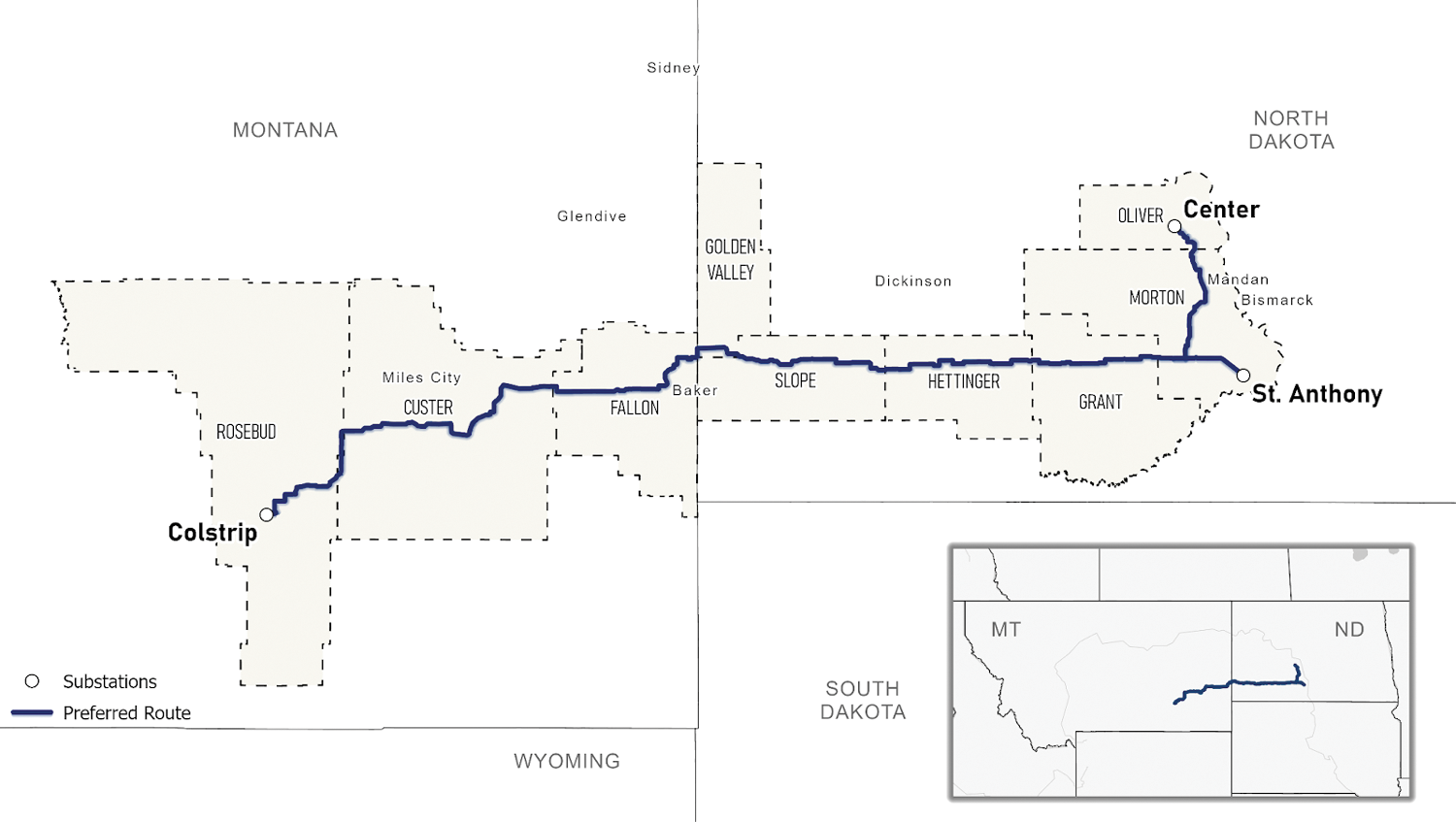Electric Transmission Line Would Be a Game Changer for Montana
By Amanda Eggert, Montana Free Press
Project developers, policymakers and think tanks working in the capital-intensive arena of energy development say a new Montana-North Dakota high-voltage transmission line could be a game changer for an area of the American West that’s seen limited expansion to its power grid in four decades. The North Plains Connector Line would be the region’s first major grid expansion since the construction of a 500-kilovolt line that carries power from the Colstrip coal-fired power plant to population centers in the Pacific Northwest in the mid-1980s.
Late last year, Minnesota-based energy company ALLETE and Grid United, a Houston-based transmission developer, announced their partnership on a proposal to build a $3.2 billion transmission line from Colstrip to central North Dakota. The companies are billing the roughly 400-mile line as a “long-term energy infrastructure asset” that will help utilities access new regional energy markets, meet rising electricity demand and become more resilient to grid-straining cold snaps and heat waves.
Stakeholders like Kyle Unruh, with renewable energy advocacy organization Renewable Northwest, also describe the North Plains Connector Line as an opportunity for Montana to reap some of the economic benefits accompanying an “explosion” of demand for new power generation — renewable generation in particular. It would do that by allowing a significant amount of electricity to flow between national energy markets.
If built, the North Plains Connector Line will be the first high-capacity transmission line to link the Western Interconnect with the Eastern Interconnect.
Currently, the western grid is transmission-constrained, challenging utilities that struggle to accommodate rising electricity use and throttling investment in utility-scale energy projects. The North Plains Connector would allow about 3,000 megawatts of additional generation onto the grid.
Grid United plans to submit an environmental impact statement — which will allow the public to review and comment on details of the project proposal — to the U.S. Department of Energy this fall. Brant Johnson, the project’s lead developer for Grid United, said he’s hopeful the review process will conclude within two years. If all goes according to Grid United’s plan, the line could be operational by 2030.
Unruh recently told Montana Free Press there are multiple reasons he’s optimistic the project will be built, even given the notorious difficulties associated with transmission planning and permitting. In his assessment of the project’s prospects, he noted the federal government’s recent move to streamline transmission review and Grid United’s reputation as an “extremely capable” transmission developer with a proactive approach to engaging local communities.
Last month’s announcement that Portland General Electric has inked a deal with Grid United and ALLETE for 20% of the line’s capacity, bringing the line’s total subscribed capacity to 55%, further improves the project’s prospects by reducing some of the financial risk associated with building it. (ALLETE, which owns two utilities in the upper midwest and a handful of other energy companies, is expected to account for 35% of the capacity on the line and oversee its operation.)
During a May 22 presentation before the Montana Legislature’s interim Energy and Telecommunications Committee, Unruh, who formerly worked as a transmission market analyst for NorthWestern Energy, discussed the economic implications of expanding the grid.
Increasing transmission capacity can help Montana capitalize on its “preeminent wind resource,” entice electricity-intensive businesses to set up shop in (or remain in) Montana, and alleviate the rising power and property tax bills many Montanans are facing, he argued.
In the two decades since Montana’s first utility-scale wind farm came online, more than 20 additional projects have come online, with more in the works. Credit: DEQ
On the flip side, Unruh says, Montana’s economy is currently “starting to reap the consequences” of lagging grid expansion as energy developers pursue projects in regions where transmission is currently available or planned.
“Transmission should be at the heart of every economic development discussion we have in the state and every energy discussion we have in the state,” Unruh said.
Tyler Farrell, a transmission researcher with the Rocky Mountain Institute, a nonpartisan think tank focused on decarbonizing the energy sector, said there is a chicken-or-egg dynamic at play in the relationship between electricity generation and transmission.
The North Plains Connector’s proposed route through eastern Montana and western North Dakota. Credit: Portland General Electric
This story was originally published by Montana Free Press at montanafreepress.org.


0 comments